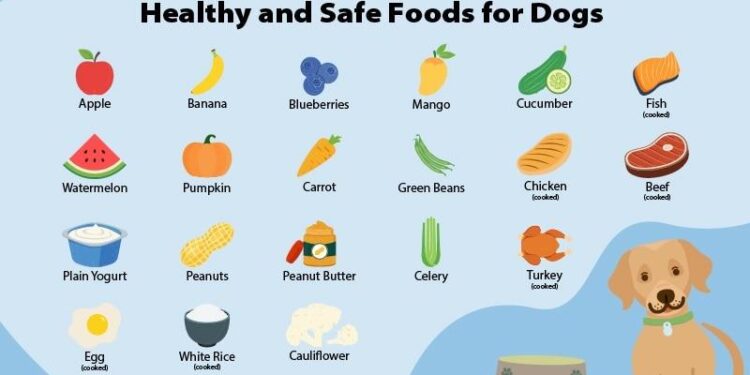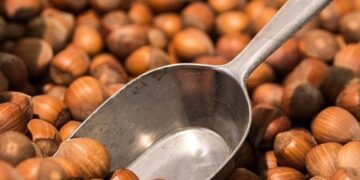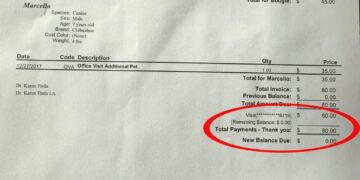Table of Contents
The Day I Realized We Were All Getting It Wrong
I remember the consultation vividly.
It was mid-2018, and the air in my veterinary nutrition practice was thick with a particular kind of certainty—the kind that comes just before a paradigm shift.
Across from me sat a couple, the devoted owners of a magnificent four-year-old Golden Retriever named Gus.
They were the perfect clients: diligent, loving, and willing to spare no expense for their dog’s well-being.
They had come for a routine wellness check, but they were mostly eager to tell me about Gus’s new diet.
They spoke with the pride of people who had done their research.
They had chosen a “boutique” brand, a grain-free formula that came in a beautifully designed bag featuring images of wolves and wild salmon.
The ingredient list was a poem of exotic proteins and antioxidant-rich berries.
It was, by every popular metric, one of the “best” dog foods on the market, and its premium price tag seemed to confirm it.
As they spoke, I felt a familiar internal conflict.
On one hand, their choice was a testament to their love for Gus.
On the other, a quiet but persistent drumbeat of concern had started among my specialist colleagues, particularly the cardiologists.
They were seeing something strange: an uptick in a serious heart condition called Dilated Cardiomyopathy (DCM) in breeds, like Golden Retrievers, that weren’t typically at risk.1
Just weeks later, that quiet drumbeat became a blaring siren.
In July 2018, the U.S. Food and Drug Administration (FDA) issued its first public alert, announcing an investigation into a potential link between certain diets—many of them grain-free and rich in legumes like peas and lentils—and this devastating heart disease.4
The news sent a shockwave through the pet owner community.
My phone began ringing off the hook.
The very clients who had been so proud of their choices were now filled with fear and confusion.
Had the food they chose out of love been slowly harming their best friend?
That moment was the beginning of a long, difficult journey for me, my colleagues, and countless dog owners.
We had to navigate a landscape where persuasive marketing had completely eclipsed nutritional science.
This article is the culmination of that journey.
It is my mission to cut through the years of noise, fear, and misinformation and provide you with a clear, reliable, and science-backed roadmap.
I want to take you from the confusion of the pet food aisle to a place of unshakable confidence, armed not just with a list of good foods, but with a new way of thinking about your dog’s nutrition for the rest of their life.
The “Healthy” Food Trap: How a Marketing Fad Hijacked Our Dog’s Bowls
To understand how we found ourselves in such a precarious position, we have to rewind the clock.
The explosion of the grain-free trend wasn’t an accident; it was the result of a perfect storm of consumer fear, clever marketing, and a fundamental misunderstanding of canine nutrition.
The Anatomy of a Trend
The stage for the grain-free movement was set in 2007 by a devastating pet food recall.
Melamine, an industrial chemical, was found in wheat gluten imported from China, leading to the sickness and death of thousands of pets.6
This event shattered consumer trust and created a deep-seated, emotionally charged suspicion of grains—especially corn and wheat—in pet food.
This fear created a power vacuum, and marketers rushed to fill it with a compelling new story.
This new narrative was built on two powerful, intuitive ideas.
The first was the allure of the ancestral diet.
Marketers began promoting the idea that domestic dogs were essentially wolves in disguise and should be fed a diet that mimicked their wild ancestors.1
In this story, grains were cast as unnatural “fillers,” cheap ingredients used by big companies to pad their profits, while meat was positioned as the only “biologically appropriate” ingredient.6
The second idea was the humanization mirror.
The rise of grain-free dog food perfectly coincided with the gluten-free, paleo, and low-carb crazes in human nutrition.7
Pet owners, already primed to think of grains as undesirable in their own diets, found it easy and logical to apply the same thinking to their pets.
If gluten-free was healthier for them, it must be healthier for their dog, too.
This created a powerful feedback loop: a compelling story reinforced by a familiar cultural trend, all built on a foundation of legitimate fear from the 2007 recall.
The Flawed Premise: Why “Reading the Ingredients” Fails
This marketing narrative taught consumers a new way to shop: ignore the brand, ignore the science, and just “read the ingredient list.” The logic seemed simple—if the first few ingredients were recognizable whole foods like chicken, sweet potato, and peas, the food must be good.
This approach, however, is a trap.
It encourages us to evaluate a highly complex, scientifically formulated product as if it were a simple recipe for a home-cooked stew.
The veterinary nutritionists at Tufts University’s acclaimed Petfoodology blog have long argued that this ingredient-focused mindset is a marketing-induced behavior that dangerously overlooks what truly matters: the final nutrient profile of the food, the bioavailability of those nutrients, the expertise of the formulators, and the rigor of the quality control process.10
An ingredient list tells you what went into the mixer, but it tells you very little about the nutritional value of the final product that comes O.T.
Furthermore, the central premise that fueled the entire trend—that grains are a primary cause of allergies in dogs—is demonstrably false.
Decades of clinical data show that true grain allergies are exceptionally rare.
The most common food allergens for dogs are proteins, with beef, chicken, and dairy topping the list.13
The entire grain-free movement was built on solving a problem that, for the vast majority of dogs, never existed.
It was a brilliant marketing solution in search of a nonexistent problem.
The Wake-Up Call: A Mysterious Heart Condition and a Terrifying Discovery
The disconnect between marketing and science came to a head in July 2018 with the FDA’s announcement.
The investigation into diet-associated Dilated Cardiomyopathy (DCM) became a painful, real-world lesson in the consequences of prioritizing trends over evidence.
The Unfolding Crisis
DCM is a disease of the heart muscle that causes it to become enlarged and weak, reducing its ability to pump blood.
This can lead to congestive heart failure and, ultimately, death.2
While DCM has a known genetic link in certain breeds like Doberman Pinschers and Great Danes, the alarm bells began ringing when veterinary cardiologists started seeing a surge of cases in
atypical breeds—Golden Retrievers, Labrador Retrievers, Whippets, and even small breeds like Shih Tzus.1
This pattern strongly suggested an environmental cause, and the one thing these disparate dogs had in common was their diet.
As the FDA collected data from hundreds of cases, a terrifying picture emerged.
Of the diets reported in diagnosed DCM cases:
- More than 90% were labeled “grain-free”.4
- 93% listed peas and/or lentils as primary ingredients.4
This revealed a critical distinction: the problem wasn’t necessarily the absence of grains, but rather the high concentration of pulse ingredients (peas, lentils, chickpeas, and potatoes) that were being used to replace them.5
These ingredients, while nutritious in small amounts, had never before been used as the primary carbohydrate and protein source in canine diets for extended periods.
The boutique brands, in their rush to meet the marketing demand for “grain-free,” had inadvertently launched a massive, uncontrolled, and ultimately tragic experiment on the nation’s pets.
The data points only tell part of the story.
The true toll was measured in the heartbreak of owners who had to watch their vibrant, healthy dogs suddenly become lethargic, cough, collapse, and struggle for breath.17
On forums and in support groups, owners shared stories of gut-wrenching guilt, realizing that the expensive “premium” food they had so carefully selected might have contributed to their dog’s suffering.18
One owner of a young dog who died of DCM wrote, “Please do not feed your dogs boutique, exotic, or grain-free foods…
She lived a very excruciating life and died painfully from DCM”.17
These were not negligent owners; they were loving, conscientious people who had been convinced by persuasive marketing that they were making the absolute best choice.
The Lingering Confusion
The situation was further complicated in December 2022 when the FDA announced it would not be releasing further public updates unless “meaningful new scientific information” came to light.4
Some pet food companies and bloggers misleadingly trumpeted this as an exoneration, claiming the FDA had found no link.21
This is a dangerous misinterpretation.
The FDA did not retract its warning.
The investigation remains open.
The agency itself has stated that the issue is a “complex scientific issue that may involve multiple factors”.4
The consensus among the vast majority of board-certified veterinary nutritionists and cardiologists has not changed: they continue to advise owners to avoid these diets unless there is a specific medical reason to feed them.5
The potential risk, however small, far outweighs the unproven, marketing-driven benefits.
The scientific community’s position is clear: why take the chance?
My Epiphany: Are You Hiring a Shipwright or a Ship Decorator for Your Dog’s Health?
As I navigated this crisis alongside my clients, I struggled to find a simple way to explain the core of the problem.
How could I convey the difference between a food that just looked good on the surface and one that was built on a foundation of deep science? The answer came to me in the form of an analogy: choosing a dog food is like commissioning a ship for a long and perilous voyage.
And in this process, you can either hire a Ship Decorator or a Master Shipwright.
The Ship Decorator represents the marketing-focused, “boutique” pet food brand.
They are masters of aesthetics and storytelling.
Their ships are stunning.
The decks are made of polished teak (exotic proteins like kangaroo or bison).
The brass fittings gleam (a sprinkle of blueberries and kale).
The sails are embroidered with compelling stories of wolves and ancestral wilderness.
They sell you a beautiful idea of a ship, one that appeals to your emotions and your sense of what a vessel should look like.
But they neglect the deep, unglamorous, and critically important work of naval architecture.
They haven’t invested in the hydrodynamics, the material stress testing, the engine’s long-term reliability, or the countless sea trials needed to prove the vessel is truly seaworthy.
The Master Shipwright, on the other hand, represents the science-based pet food manufacturer.
They are obsessed with the fundamentals.
Their primary concern is not how the ship looks, but whether it will withstand a hurricane.
They employ teams of seasoned naval architects and marine engineers (board-certified veterinary nutritionists and PhDs in animal nutrition).
They have a deep understanding of materials science (nutrient bioavailability and interactions).
They run countless simulations and long-term sea trials (AAFCO feeding trials) to ensure every component works in harmony.
Their ships might not always look as trendy or use the most exotic materials—they might even use common, time-tested materials like steel (corn) and wood (chicken by-product meal) because they have been proven to be safe and effective for decades.
Their focus is on building a vessel that is, above all, safe, reliable, and capable of carrying its precious cargo through a long and healthy life.
For years, we were all taught to shop for dog food like we were hiring a decorator.
We were told to admire the beautiful ingredient list, to fall in love with the romantic story on the bag.
The DCM crisis was the hurricane.
It was the storm that revealed, in the most tragic way possible, which ships were truly seaworthy and which were just beautiful, unseaworthy props.
It taught me, and I hope it teaches you, that we must start looking for the Shipwright’s credentials, not the Decorator’s portfolio.
The Shipwright’s Blueprint: A Science-Backed Framework for Choosing the Right Food
Armed with this new perspective, we can move from confusion to clarity.
The “Shipwright’s Blueprint” is a practical framework for identifying manufacturers who prioritize science over marketing.
It’s not about memorizing a list of “good” or “bad” ingredients; it’s about learning how to evaluate the company behind the food.
Pillar 1: The WSAVA Guidelines – Your True North
The single most powerful tool for any dog owner is the set of guidelines published by the World Small Animal Veterinary Association (WSAVA) Global Nutrition Committee.25
These guidelines are not a list of approved brands, but rather a list of critical questions you should ask a pet food manufacturer to determine if they are a “Shipwright.” A trustworthy company should be able and willing to answer these questions easily.
The key questions from the WSAVA guidelines are:
- Do you employ a full-time, qualified nutritionist? Look for a company that has a board-certified veterinary nutritionist (a Diplomate of the American College of Veterinary Nutrition, or DACVN) or a PhD in animal nutrition on staff. This is the equivalent of having a chief naval architect on the design team.25
- Who formulates your diets and what are their credentials? This reinforces the first question. The person making the decisions about nutrient levels and ingredient interactions must have deep, formal expertise.
- Do you own your own manufacturing plants? Companies that own their facilities have direct control over quality and safety protocols, significantly reducing the risk of cross-contamination—a critical factor in preventing recalls.28 Many boutique brands use a third-party “co-packer,” which manufactures foods for multiple different brands in the same facility.
- What are your specific quality control measures? A “Shipwright” company will be able to describe a multi-step process that includes testing raw ingredients upon arrival, testing during production, and testing the final batch of food before it is released for sale.25
- Do you conduct AAFCO feeding trials? This is perhaps the most critical question. There are two AAFCO standards: “formulated to meet AAFCO nutrient profiles” and “Animal feeding tests using AAFCO procedures substantiate that [Product Name] provides complete and balanced nutrition.” The first means the food was created using a recipe based on published nutrient requirements. The second means the company actually fed the finished food to real dogs for an extended period (typically six months) and monitored their health to prove the food is safe and nutritionally adequate. This is the difference between a blueprint and a full sea trial.25
- Can you provide a complete nutrient analysis for the diet? A company focused on nutrition should be able to provide exact values for key nutrients (like protein, fat, calcium, phosphorus, sodium, etc.), not just the minimums and maximums on the bag’s “Guaranteed Analysis.” This demonstrates a focus on nutritional precision.
Pillar 2: Decoding the “Big Three” – What Decades of Research Actually Looks Like
While many smaller companies are working to meet these standards, the brands most consistently recommended by veterinary nutritionists for meeting the WSAVA criteria are Purina, Hill’s Science Diet, and Royal Canin.27
Examining their operations gives us a real-world look at what a “Master Shipwright” looks like.
- Purina: With over 90 years of research and a team of more than 500 veterinarians, nutritionists, and scientists, Purina’s philosophy is explicitly focused on nutrients, not just ingredients.31 They understand that the interaction and balance of nutrients is what matters for an animal’s health. They conduct extensive AAFCO feeding trials and have a massive research facility where they study everything from nutrient digestibility to feeding behaviors, all to ensure their products are safe and effective.31
- Hill’s Science Diet: Hill’s operates on a principle of “evidence-based clinical nutrition,” a concept borrowed from human medicine.34 Their team of over 220 veterinarians and PhD nutritionists uses a scientific approach called “predictive biology” to understand how nutrition impacts a pet’s genes and physiology.35 Their state-of-the-art Pet Nutrition Center in Kansas is a hub of research and development, and they have published hundreds of peer-reviewed studies, contributing immense knowledge to the entire field.35
- Royal Canin: Royal Canin is perhaps best known for its “nutrient-first” philosophy and its obsession with precision.38 They have pioneered breed-specific nutrition, conducting extensive research into the unique physiological needs of different breeds. This goes as far as designing the shape and texture of the kibble to match a specific breed’s jaw structure and eating patterns, which can improve digestibility and dental health.40 Their approach is a masterclass in tailoring nutrition to the specific needs of the animal, rather than chasing human food trends.42
These companies are not infallible, but their deep, long-term investment in science, research, quality control, and expert personnel is the very definition of the “Shipwright” model.
Pillar 3: Why Grains Aren’t the Enemy (And Never Were)
The final piece of the blueprint is to dismantle the myths that led us astray in the first place.
Armed with scientific evidence, we can confidently reclaim grains as a valuable part of a balanced canine diet.
- Myth 1: Dogs Can’t Digest Grains. This is biologically false. A landmark 2013 study published in Nature revealed that during domestication, dogs evolved multiple copies of key genes responsible for starch digestion—genes that their wolf ancestors lack.6 This genetic adaptation allowed them to thrive on the starch-rich scraps of early human agricultural settlements. Our modern dogs are not wolves; they are uniquely adapted to be our omnivorous companions.
- Myth 2: Grains Cause Allergies. As stated before, this is a massive misconception. Clinical evidence overwhelmingly shows that true grain allergies are exceedingly rare. A dog presenting with itchy skin or digestive upset is far more likely to be allergic to a common protein like beef or chicken than to the corn or rice in their food.12
- Myth 3: Grains are “Fillers” with No Nutritional Value. This is a marketing term, not a nutritional one. Whole grains like corn, brown rice, and barley are not “empty calories.” They contribute valuable nutrients, including highly digestible protein, essential fatty acids for skin and coat health, vitamins, minerals, and crucial dietary fiber that promotes a healthy gut microbiome.11 In a properly formulated diet, they are functional, beneficial ingredients, not just “filler.”
| Feature | The “Shipwright” (Science-First) | The “Decorator” (Marketing-First) |
| Primary Goal | To create a nutritionally complete, balanced, and safe food that supports long-term health. | To create a product that appeals to consumer trends and emotions. |
| Key Personnel | Board-certified veterinary nutritionists (DACVN), PhDs in animal nutrition, food scientists. | Marketing teams, food designers, sometimes consultants with limited formal credentials. |
| Formulation Basis | Decades of peer-reviewed research, nutrient bioavailability studies, and feeding trials. | Human food trends (e.g., paleo, gluten-free), ingredient popularity, ancestral diet concepts. |
| Primary Evidence | AAFCO feeding trials proving safety and efficacy in live animals over months. | “Formulated to meet” AAFCO standards; relies on ingredient list appeal. |
| Quality Control | Owns manufacturing facilities; rigorous multi-stage testing of ingredients and final product. | Often uses third-party co-packers; quality control protocols can be less transparent. |
| View on Grains | Grains are a valuable source of nutrients and energy, backed by decades of safe use. | Grains are “fillers” or “allergens” to be avoided in favor of trendier substitutes like legumes. |
| Marketing Focus | Highlights scientific research, health outcomes, and veterinary recommendations. | Highlights exotic ingredients, “natural” claims, and emotional stories (e.g., wolf ancestry). |
The Fleet: My Recommended Grain-Inclusive Dry Dog Foods for 2025
Putting the “Shipwright’s Blueprint” into practice, we can now confidently identify top-tier foods.
This list is not exhaustive, but it represents excellent examples of products made by manufacturers who meet the rigorous criteria we’ve established.
Each one is a well-built vessel, ready for a lifetime of voyages.
Best for Adult Dogs (Overall Maintenance)
- Purina Pro Plan Complete Essentials Shredded Blend Chicken & Rice: A flagship product from a quintessential “Shipwright.” It is backed by decades of research, formulated by Purina’s team of over 500 experts, and validated by extensive AAFCO feeding trials, ensuring its safety and nutritional completeness. It also includes guaranteed live probiotics to support digestive and immune health.46
- Hill’s Science Diet Adult Chicken & Barley Recipe: This diet is a direct result of Hill’s “evidence-based clinical nutrition” philosophy. It’s formulated to provide a precise balance of nutrients for adult maintenance, with clinically proven antioxidants to support a healthy immune system. It is one of the most frequently recommended brands by veterinarians worldwide.49
- Royal Canin Size Health Nutrition (e.g., Medium Adult): A prime example of Royal Canin’s focus on precision. This line is tailored to the specific energy needs and metabolic rates of dogs based on their size (small, medium, large). The kibble size and shape are also customized to encourage proper chewing for better digestion.46
Best for Puppies (Especially Large Breed)
- Purina Pro Plan Sport Development 30/20 or Large Breed Puppy: Puppyhood is a critical time for development, and these formulas are built on a foundation of science. They contain DHA from fish oil for brain and vision development and a carefully calibrated calcium-to-phosphorus ratio to support healthy bone growth, which is especially critical for large breeds.33
- Hill’s Science Diet Puppy Large Breed: Formulated with optimal levels of calcium for controlled bone growth, this food is designed to prevent the developmental orthopedic diseases that can affect large breed puppies. It’s backed by the full weight of Hill’s research and development team.46
- Eukanuba Puppy Large Breed: Eukanuba has a long history of focusing on the needs of active and working dogs. Their puppy formulas are known for high-quality animal protein to build lean muscle and DHA for cognitive development, all validated through their commitment to ongoing research.27
Best for Sensitive Skin & Stomach
- Purina Pro Plan Sensitive Skin & Stomach Salmon & Rice: This is one of the most highly recommended formulas by veterinarians for dogs with non-specific dietary sensitivities. It uses salmon as the primary protein source and oatmeal, which is easily digestible. It’s fortified with omega-3 and omega-6 fatty acids to nourish the skin and coat.27
- Hill’s Science Diet Sensitive Stomach & Skin Chicken Recipe: This formula features highly digestible ingredients and prebiotic fiber to fuel beneficial gut bacteria and support a balanced microbiome. It’s a science-backed solution for dogs who need extra digestive support.27
Best for Seniors
- Purina Pro Plan Bright Mind 7+: A truly innovative senior diet. In addition to supporting joint health with glucosamine and EPA, this formula contains enhanced botanical oils shown in Purina’s research to promote alertness and mental sharpness in dogs aged seven and older.46
- Iams Proactive Health Healthy Aging: Iams, along with Eukanuba, is another brand that meets WSAVA guidelines. This senior formula is designed with key nutrients to support the aging process, including antioxidants for a healthy immune system and L-carnitine to help maintain a healthy metabolism.27
| Product Name | Best For | Key Features | Why It’s a “Shipwright” Choice |
| Purina Pro Plan Complete Essentials Chicken & Rice | Adult Maintenance | Live probiotics for gut health; real chicken is the #1 ingredient; dual-texture kibble. | Meets WSAVA Guidelines; backed by AAFCO Feeding Trials; formulated by 500+ scientists. |
| Hill’s Science Diet Adult Chicken & Barley | Adult Maintenance | Clinically proven antioxidants; precisely balanced nutrients; high-quality protein. | Meets WSAVA Guidelines; developed by 220+ vets & PhDs; evidence-based formulation. |
| Royal Canin Medium Adult | Adult Maintenance | Tailored energy levels for size; highly digestible proteins; customized kibble shape. | Meets WSAVA Guidelines; nutrient-first philosophy; extensive breed-specific research. |
| Purina Pro Plan Large Breed Puppy | Puppies | DHA for brain/vision; optimal calcium/phosphorus ratio for bone health. | Meets WSAVA Guidelines; backed by AAFCO Feeding Trials; decades of puppy nutrition research. |
| Purina Pro Plan Sensitive Skin & Stomach Salmon | Sensitive Systems | Salmon #1 ingredient; oatmeal is gentle on digestion; high in Omega fatty acids. | Meets WSAVA Guidelines; a top vet-recommended formula for sensitivities; proven efficacy. |
| Purina Pro Plan Bright Mind 7+ | Senior Dogs | Enhanced botanical oils for cognitive health; glucosamine for joints. | Meets WSAVA Guidelines; based on proprietary, peer-reviewed research on canine aging. |
Conclusion: From Confusion to Confidence – A Promise to My Dog
I often think back to Gus, the Golden Retriever from that 2018 consultation.
After the FDA alert, his worried owners called me immediately.
We transitioned him off his boutique grain-free diet and onto a science-backed, grain-inclusive formula from a “Shipwright” company.
We ran baseline bloodwork and an echocardiogram to be safe.
Thankfully, his heart was healthy.
Today, Gus is a thriving, happy senior dog.
His story had a happy ending, but for too many others, it did not.16
The journey through the DCM crisis was a painful but necessary one for the veterinary community and for pet owners.
It forced us to look past the beautiful packaging and the romantic marketing stories and ask tougher, more important questions.
It reminded us that nutrition is a science, not a trend.
The goal of this guide was never to give you a fish, but to teach you how to fish.
The list of “best foods” will evolve, but the principles of the “Shipwright’s Blueprint” are timeless.
You now have the tools to look at any bag of dog food and know what to look for—not on the ingredient list, but in the company’s commitment to science, expertise, and quality.
You know how to spot the difference between a Shipwright and a Decorator.
In a world saturated with noise, our ultimate responsibility as dog owners is to be their advocate, their researcher, and their discerning filter.
It is a promise we make to them when we bring them into our lives: to protect them, to nourish them, and to always choose the sturdy, well-built ship over the one that is merely decorated to look the part.
It is the most profound way we can love them back.
Works cited
- The Dangerous Link Between Grain-Free Dog Food and Heart Disease – Essex Middle River Veterinary Center, accessed August 15, 2025, https://emrvc.com/resources/species/dogs/grain-free-dangerous-dog-heart-disease/
- FDA Grain-Free Diet Alert: What Dog Owners Need to Know – American Kennel Club, accessed August 15, 2025, https://www.akc.org/expert-advice/nutrition/fda-grain-free-diet-alert-dcm/
- UC Davis Investigates Link Between Dog Diets and Deadly Heart Disease, accessed August 15, 2025, https://www.vetmed.ucdavis.edu/news/uc-davis-investigates-link-between-dog-diets-and-deadly-heart-disease
- FDA Investigation into Potential Link between Certain Diets and Canine Dilated Cardiomyopathy, accessed August 15, 2025, https://www.fda.gov/animal-veterinary/outbreaks-and-advisories/fda-investigation-potential-link-between-certain-diets-and-canine-dilated-cardiomyopathy
- The Rise and Fall of Grain-Free Pet Food: What You Should Know in 2025, accessed August 15, 2025, https://transconpet.com/the-rise-and-fall-of-grain-free-pet-food-what-you-should-know-in-2025/
- Grain-Free Pet Food Trend a Hoax? – Animal Medical Center of Chicago, accessed August 15, 2025, https://www.animalmedicalcenterofchicago.com/grain-free-pet-food-trend-a-hoax/
- The grain-free trends today – GlobalPETS, accessed August 15, 2025, https://globalpetindustry.com/article/grain-free-trends-today/
- The Hype Over Grain-Free Pet Food. Are Grain-Free Pet Foods Really Better? | Addiction Pet, accessed August 15, 2025, https://addictionpet.com/blog/the-hype-over-grain-free-pet-food-are-grain-free-pet-foods-really-better/
- Why are the majority of dog foods grain free when apparently that causes heart disease?, accessed August 15, 2025, https://www.reddit.com/r/dogs/comments/xdgpbv/why_are_the_majority_of_dog_foods_grain_free_when/
- grain-free – Petfoodology – Tufts Sites – Tufts University, accessed August 15, 2025, https://sites.tufts.edu/petfoodology/tag/grain-free/
- Grain-Free Diets – Big on marketing, Small on truth – Petfoodology – Tufts Sites, accessed August 15, 2025, https://sites.tufts.edu/petfoodology/2016/06/14/grain-free-diets-big-on-marketing-small-on-truth/
- Grain-Free Diets – Big on marketing, Small on truth, accessed August 15, 2025, https://dcmdogfood.com/wp-content/uploads/2019/05/vetnutrition.tufts_.edu-Grain-Free-Diets-Big-on-marketing-Small-on-truth.pdf
- The Rise and Fall of Grain-Free Pet Food – Food Industry Executive, accessed August 15, 2025, https://foodindustryexecutive.com/2019/10/the-rise-and-fall-of-grain-free-pet-food/
- Is a Grain-free Diet Healthier for my Dogs and Cats? – Tufts Now, accessed August 15, 2025, https://now.tufts.edu/2017/04/10/grain-free-diet-healthier-my-dogs-and-cats
- FDA Investigation into Potential Link between Certain Diets and Canine Dilated Cardiomyopathy – February 2019 Update, accessed August 15, 2025, https://www.fda.gov/animal-veterinary/news-events/fda-investigation-potential-link-between-certain-diets-and-canine-dilated-cardiomyopathy-february
- FDA urges collaboration as dilated cardiomyopathy afflicts more dogs | American Veterinary Medical Association, accessed August 15, 2025, https://www.avma.org/javma-news/2021-01-01/fda-urges-collaboration-dilated-cardiomyopathy-afflicts-more-dogs
- PSA: Just realized my family dog died of food-related DCM : r/dogs, accessed August 15, 2025, https://www.reddit.com/r/dogs/comments/peardd/psa_just_realized_my_family_dog_died_of/
- [Discussion] Today marks 1 year that my dog was diagnosed with DCM. – Reddit, accessed August 15, 2025, https://www.reddit.com/r/dogs/comments/jknuw7/discussion_today_marks_1_year_that_my_dog_was/
- Nutritional Cardiomyopathy: Still A Major Problem In Dogs | Mission Veterinary Emergency & Specialty, accessed August 15, 2025, https://www.missionveterinaryspecialists.com/blog/nutritional-cardiomyopathy-still-a-major-problem-in-dogs
- Until more science is available, FDA will end public updates on potential link between certain diets and canine dilated cardiomyopathy | American Veterinary Medical Association, accessed August 15, 2025, https://www.avma.org/news/until-more-science-available-fda-will-end-public-updates-potential-link-between-certain-diets
- Recent FDA Report Says DCM In Dogs Is Not Linked to Grain-Free Food – Life’s Abundance, accessed August 15, 2025, https://blog.lifesabundance.com/post/2023/01/04/recent-fda-report-says-dcm-in-dogs-is-not-linked-to-grain-free-food.aspx?realname=
- The Dilated Cardiomyopathy and Grain-Free Pet Food Debacle – Pet Professional Guild, accessed August 15, 2025, https://www.petprofessionalguild.com/barks/barks-magazine-blog/the-dilated-cardiomyopathy-and-grain-free-pet-food-debacle/
- 2021 AAHA Nutrition and Weight Management Guidelines for Dogs and Cats, accessed August 15, 2025, https://www.aaha.org/wp-content/uploads/globalassets/02-guidelines/2021-nutrition-and-weight-management/resourcepdfs/new-2021-aaha-nutrition-and-weight-management-guidelines-with-ref.pdf
- Do Vets Recommend Grain-Free Dog Food? Understanding the Controversy and Implications for Your Pup’s Diet | Houndsy, accessed August 15, 2025, https://www.houndsy.com/blogs/modern-tails/do-vets-recommend-grain-free-dog-food-understanding-the-controversy-and-implications-for-your-pups-diet
- All You Need to Know About WSAVA – Dog Food Advisor, accessed August 15, 2025, https://www.dogfoodadvisor.com/choosing-dog-food/all-you-need-to-know-about-wsava/
- WSAVA Global Nutrition Committee: Guidelines on selecting Pet Foods, accessed August 15, 2025, https://christinaanimalhospital.com/news/wsava
- Veterinary Insights on WSAVA Approved Dog Food: Myth or Reality?, accessed August 15, 2025, https://thefabfunfrenchie.com/wsava-approved-dog-food/
- Is there a list of WSAVA foods? : r/DogFood – Reddit, accessed August 15, 2025, https://www.reddit.com/r/DogFood/comments/1jp22k4/is_there_a_list_of_wsava_foods/
- Choosing Dog Foods After the Grain-Free Scare – Whole Dog Journal, accessed August 15, 2025, https://www.whole-dog-journal.com/blog/choosing-dog-foods-after-the-grain-free-scare/
- Diet & Nutrition | Highlands-Eldorado Veterinary Hospital, accessed August 15, 2025, https://www.hevh.net/mckinney-tx/diet-nutrition/
- Our Pet Food Nutrition Philosophy | Purina, accessed August 15, 2025, https://www.purina.com/nutrition/our-philosophy
- Pro Plan Sport Nutrition – Purina, accessed August 15, 2025, https://www.purina.com/pro-plan/nutrition
- Dog Nutrition Resources for Every Life Stage – Purina Pro Club, accessed August 15, 2025, https://www.purinaproclub.com/purina/nutrition
- Hill’s Commitment to a Balanced Nutrition, accessed August 15, 2025, https://www.hillspet.ca/en-ca/about-us/nutritional-philosophy/properly-balanced-nutrition
- Research and Innovation Behind Hill’s Products | Hill’s Pet, accessed August 15, 2025, https://www.hillspet.com/about-us/nutritional-philosophy/research-and-innovation
- Hill’s Dog Food for High Quality Nutrition, accessed August 15, 2025, https://www.hillspet.com/dog-food
- Hill’s Pet Food Quality & Manufacturing Safety, accessed August 15, 2025, https://www.hillspet.com/about-us/quality-and-safety
- Essential nutrients for cats and dogs explained | Royal Canin US, accessed August 15, 2025, https://www.royalcanin.com/us/about-us/our-nutritional-approach/essential-nutrients-for-cats-and-dogs-explained
- Royal Canin’s Nutritional Philosophy, accessed August 15, 2025, https://www.royalcanin.com/us/es-us/about-us/our-nutritional-approach/our-nutritional-philosophy
- Breed Health Nutrition Dog Food | Royal Canin CA, accessed August 15, 2025, https://www.royalcanin.com/ca/dogs/products/breed-health-nutrition
- Tailored Nutrition for Unique Needs | Royal Canin US, accessed August 15, 2025, https://www.royalcanin.com/us/about-us/our-nutritional-approach/tailored-nutrition-for-unique-needs
- Royal Canin’s Nutritional Philosophy, accessed August 15, 2025, https://www.royalcanin.com/hk/en-hk/about-us/our-nutritional-approach/our-nutritional-philosophy
- Royal Canin’s Nutritional Philosophy, accessed August 15, 2025, https://www.royalcanin.com/in/about-us/our-nutritional-approach/our-nutritional-philosophy
- Grain Free vs. Grain Dog Food: Which One’s Best? | The Vets, accessed August 15, 2025, https://thevets.com/resources/pet-nutrition/grain-free-vs-grain-dog-food/
- Are Animal By-Products Bad for Dogs? | Purina US, accessed August 15, 2025, https://www.purina.com/articles/dog/health/nutrition/are-by-products-healthy-for-dogs
- 8 Best Dry Dog Foods in 2025, Recommended by Vets | PetMD, accessed August 15, 2025, https://www.petmd.com/dog/vet-verified/best-dry-dog-food
- WSAVA Guidelines Dog Food | Petco, accessed August 15, 2025, https://www.petco.com/shop/en/petcostore/o/wsava-approved-dog-food
- Complete Essentials Shredded Blend Chicken & Rice Dry Dog Food – Pro Plan Vet Direct, accessed August 15, 2025, https://www.proplanvetdirect.com/canine-pro-plan-savor-shredded-blend-chicken-rice-formula-adult
- Best Dog Food With Grain – DogTime, accessed August 15, 2025, https://dogtime.com/reviews/best-dog-food-with-grain/
- The 7 Best Dog Foods in 2025, Recommended by Vets – PetMD, accessed August 15, 2025, https://www.petmd.com/dog/vet-verified/best-dog-food
- Purina Pro Plan vs. Eukanuba : Who Wins? [2025] – iHeartDogs.com, accessed August 15, 2025, https://iheartdogs.com/purina-pro-plan-vs-eukanuba-who-wins/
- Royal Canin, Purina Pro Plan, Eukanuba, Iams or Hills Science Diet…?? – Reddit, accessed August 15, 2025, https://www.reddit.com/r/goldenretrievers/comments/1k9ms8g/royal_canin_purina_pro_plan_eukanuba_iams_or/






